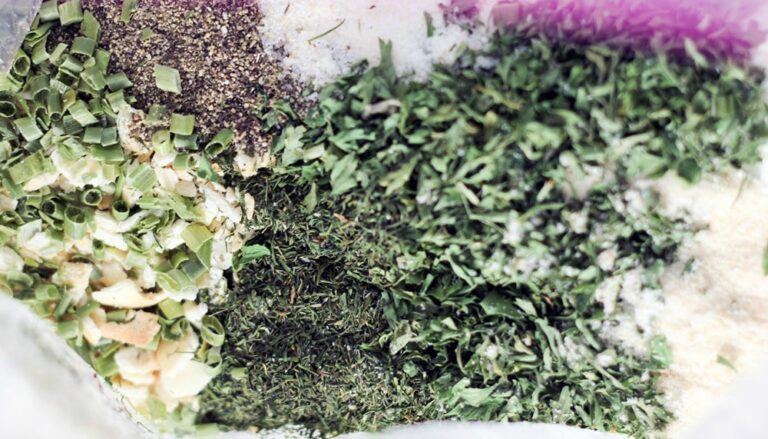The Art of Pairing Wine with Different Cuisines
Understanding Wine’s Basic Components

Wine pairing isn’t just about tradition – it’s about understanding how different elements interact on your palate. The body of a wine refers to its weight or richness on the palate (light, medium, or full-bodied). The golden rule here is to match the weight of the wine with the weight of the food. Think of it like matching dance partners – a delicate waltz requires different skills than a powerful tango.
A typical dish of any cuisine is said to have broadly six flavors, namely, spicy, bitter, sweet, savory or umami, salty, and sour or acidic. Complementing these flavors with the aromas and textures of wine requires the science of comprehensive mapping. Sweetness in wine can either complement or contrast with food. A bit of sweetness is excellent for balancing spicy or salty dishes.
The Science Behind Perfect Pairings

Food-wine pairing is an essential study in the culinary world and requires extensive research of the underlying food and wine pairing principles. Recent research has revealed fascinating insights about how our palates respond to different combinations. A good pairing of food and wine has proved to increase sales in restaurants.
Studies have shown that wine is strongly associated with food across three dimensions: complementarity, social meaning, and lubrication of the palate. Even while shopping for wine, consumers consider food pairing. Thus, to increase sales, retailers need to keep wines that pair well with the local cuisine of that region. This connection between wine and food runs deeper than simple preference – it’s cultural DNA that influences how we taste.
Italian Cuisine: Regional Harmony
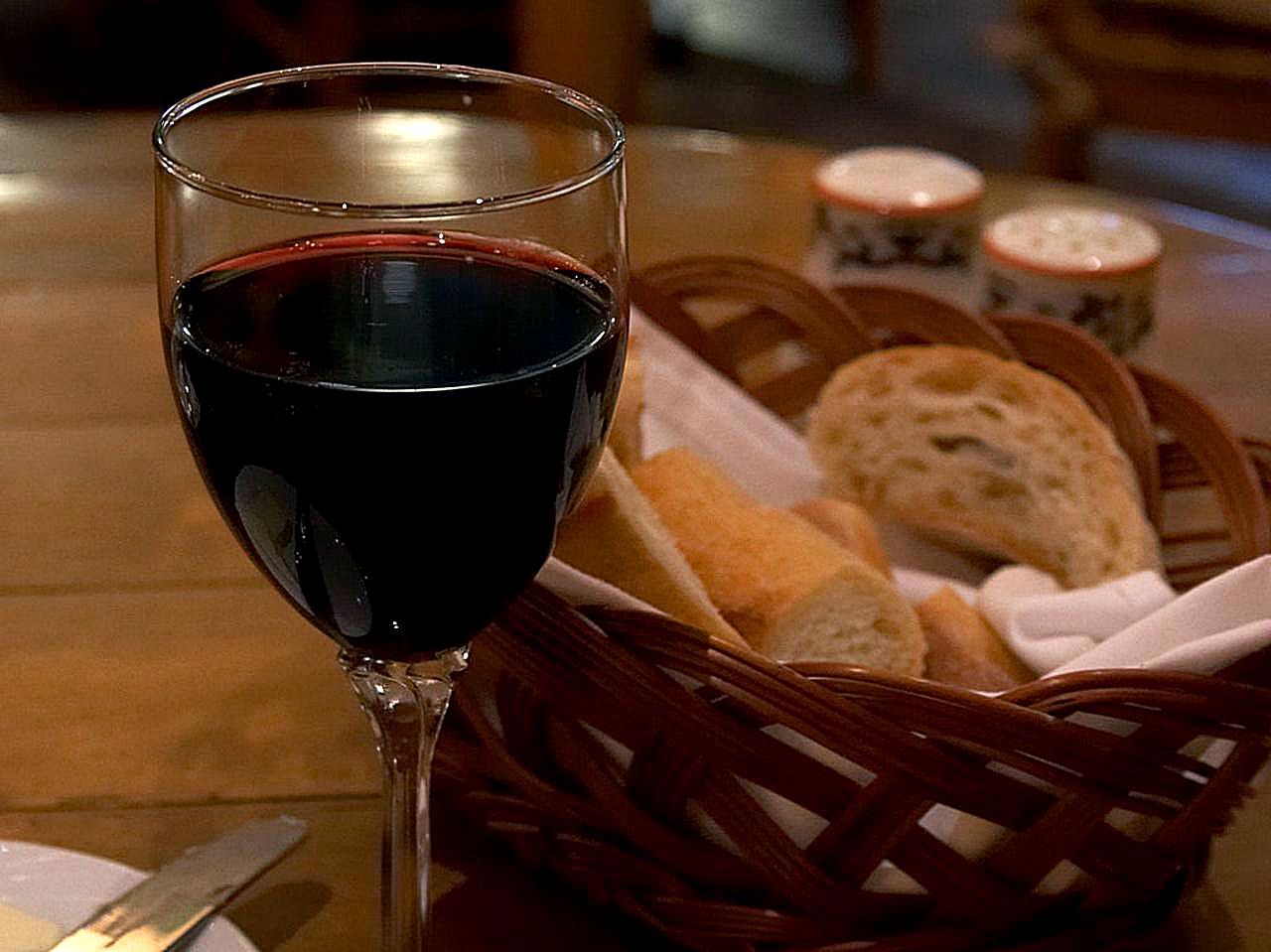
Chianti wine is perhaps the most famous wine to pair with Italian cuisine. It is a very dry red wine, but one with a bold, acidic flavor that pairs perfectly with cheese dishes, salads, and red sauces such as marinara, arrabbiata, and Bolognese. The magic happens because both the tomatoes and the wine share similar acidity levels, creating harmony instead of conflict.
A traditional Tuscan steak, Bistecca alla Fiorentina, requires a bold and structured wine to match its intensity. Chianti Classico, a DOCG wine made primarily from the Sangiovese grape, is a perfect match. The wine’s high acidity and firm tannins cut through the richness of the beef, while its flavors of cherry, leather, and spice complement the smoky, grilled notes of the steak.
Barolo, often referred to as the “king of wines”, is a powerful and complex red wine made from the Nebbiolo grape in the Piedmont region. Its deep flavors of dark fruit, tobacco, and truffles make it an excellent companion to risotto ai funghi (mushroom risotto). The earthy, umami flavors of the mushrooms are mirrored in the wine, creating a luxurious and harmonious pairing that is perfect for autumn or winter dining.
Asian Cuisine: Breaking Traditional Rules
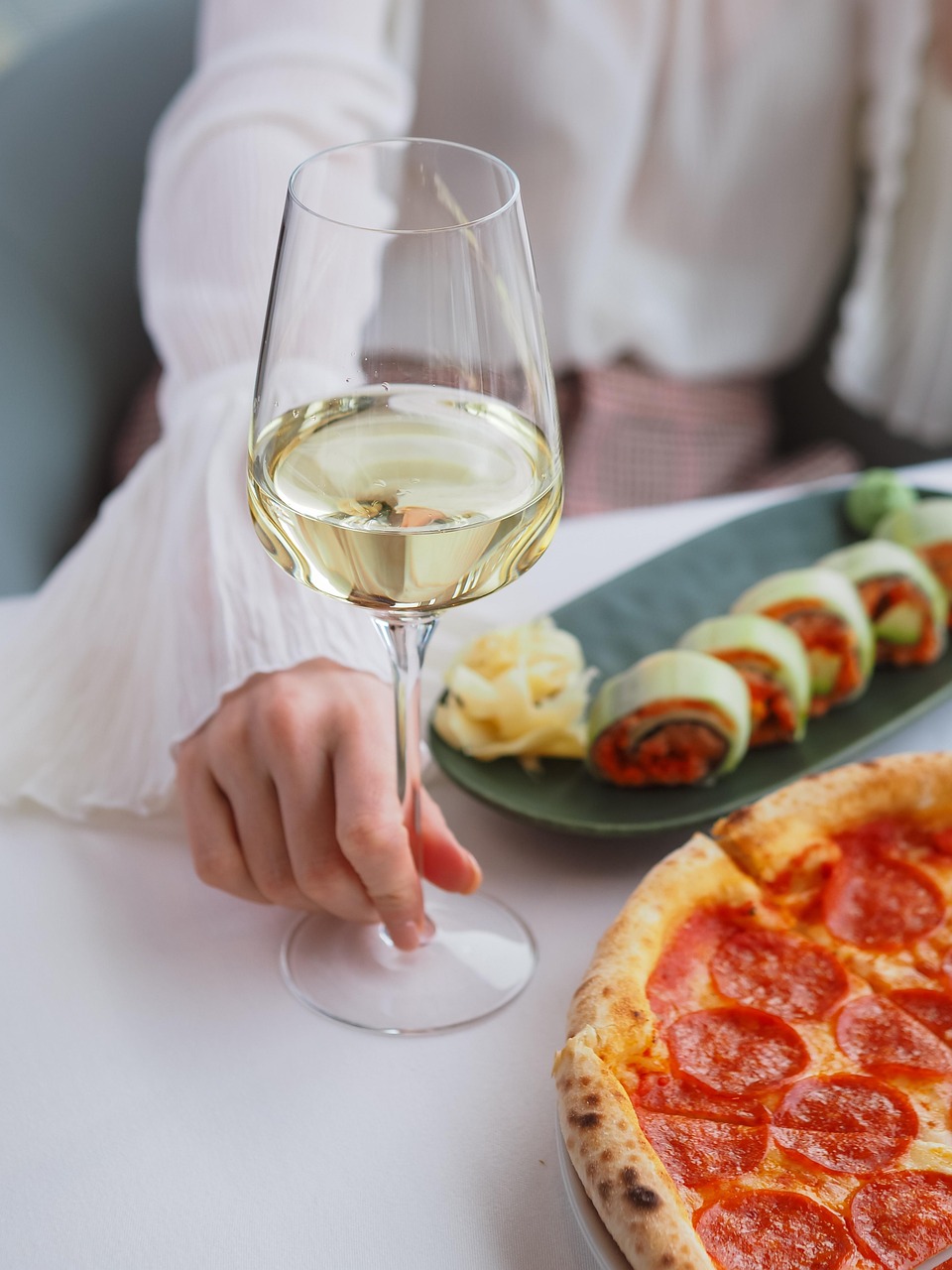
Asian dishes are, after all, often about drama. Staple ingredients like soy and fish sauce, chile paste, ginger, lemongrass, kaffir lime leaves, and hoisin all pack a punch. Spices and herbs such as cardamom, cumin, coriander, five-spice powder, and garam masala are not meek in aroma or flavor, especially since they’re often used in combination.
Wonderful as they are in an Asian dishes, flavors like these can flatten out many wines, rob them of their fruity characters, and make them taste dull, hollow, bitter, oaky, or alcoholic. After years of experimentation, here’s what I’ve come to know: The wines that work are not likely to be Chardonnays. Most New World Chardonnays, which are usually oaky and toasty to begin with, can taste like a two-by-four when paired with Chinese, Thai, or Indian seasonings.
The best wines for most Asian dishes are high in acidity. Snappy, clean, high acid wines have a kind of refreshing vibrancy that’s a great counterpoint to the flavors. A Thai green curry, for instance, is marked by fiery heat and fragrant herbs. To counterbalance the spiciness, you might consider a well-chilled off-dry Riesling. Its natural sweetness and high acidity make it an ideal partner, taming the chili heat while drawing out the herbal flavors.
Chinese Cuisine: Sweet, Sour, and Savory Balance
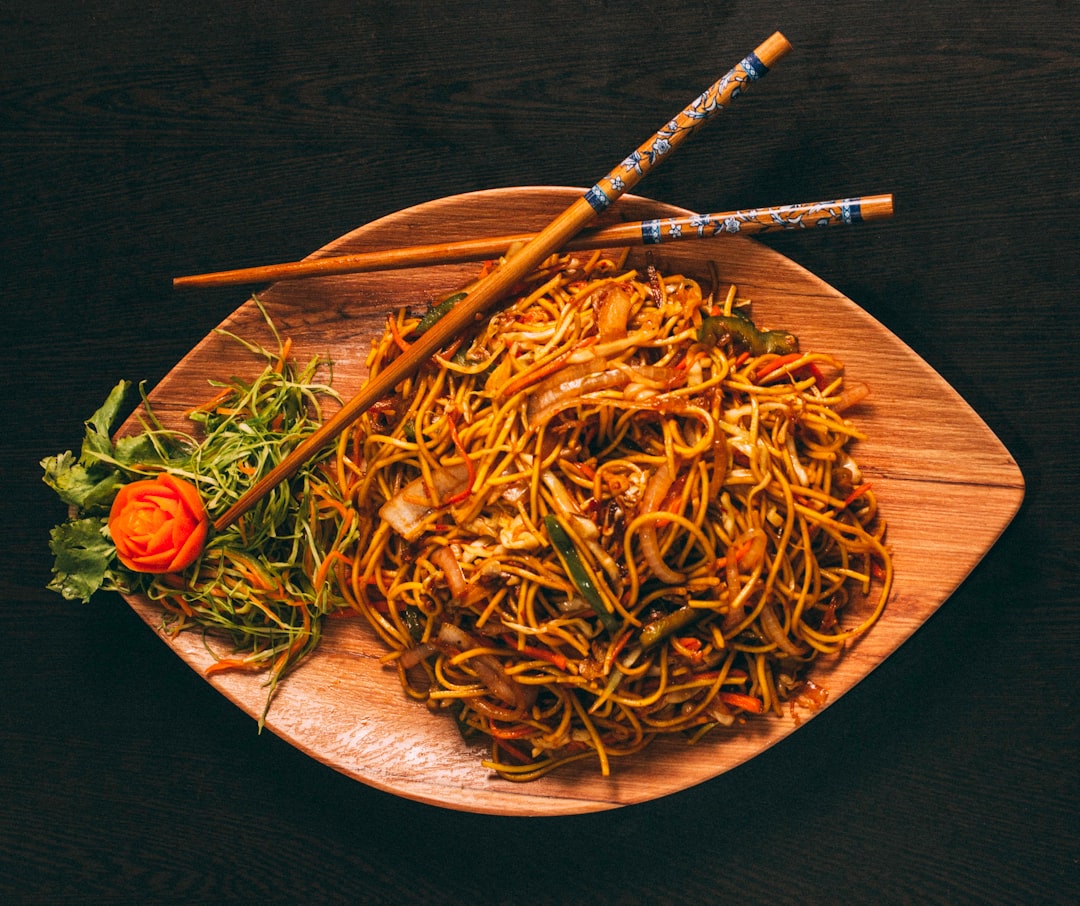
Chinese food comprises a whole range of regional cuisines, but the most familiar style eaten in Britain is Cantonese. The emphasis is on textures and savoury sauces rather than combining spices. Vegetables, mushrooms, pork, duck and chicken are all essential ingredients. Dishes are usually milder than in India, but those classic sweet and sour elements are challenging.
Classic German white wines are a good idea. For example, an off-dry German Riesling has acidity plus a delicate sweetness that is delightful with stir-fries and can handle sweet and sour. They also go well with pork dishes and crispy Peking duck pancakes. German Kabinett Riesling can handle it! This comes from Riesling’s aromatics, subtle sweetness, high acidity, and lighter body, which can stand up to the flavor profile of a variety of popular Chinese dishes.
Japanese Cuisine: Delicate Precision
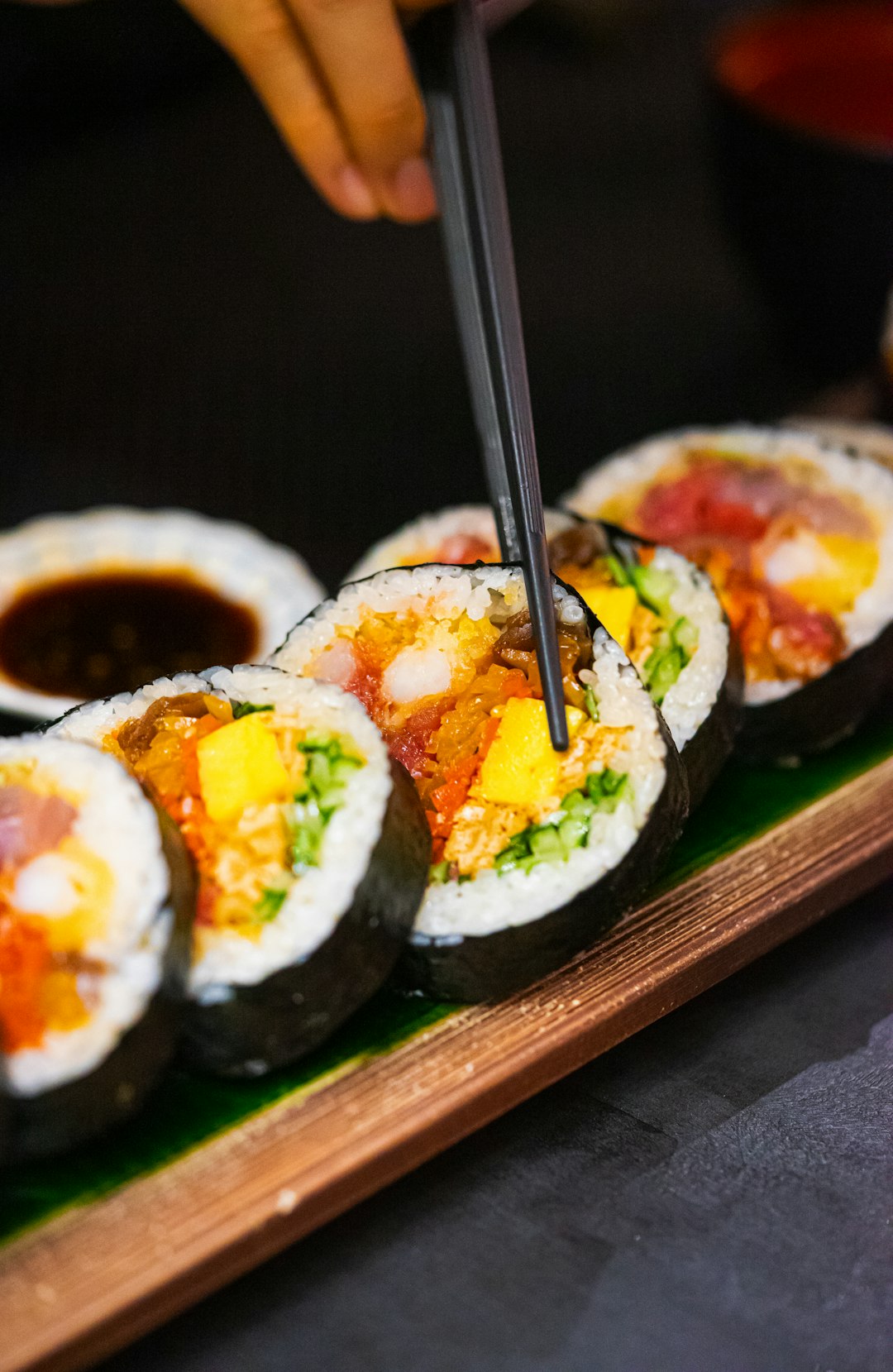
Japanese food has two main components in its flavor profiles: dashi (Japanese broth) and citrus fruits. This creates a completely different challenge from other Asian cuisines, requiring wines that can complement rather than compete with subtle flavors.
Japanese sushi, with its fresh, subtle flavors, is beautifully paired with a bright, crisp white wine such as a Sancerre or a dry Champagne. These wines, with their high acidity and mineral undertones, echo the clean flavors of the sushi and the salinity of the soy sauce, creating a harmonious dining experience. Orange Wines tend to have a higher acetic acid in comparison to other white wines. Kohada sushi is prepared with rice vinegar which contains enough acetic acid. Since it is traditionally not cooked, orange wines help remove the unnecessary flavor of the fish.
Indian Cuisine: Taming the Heat
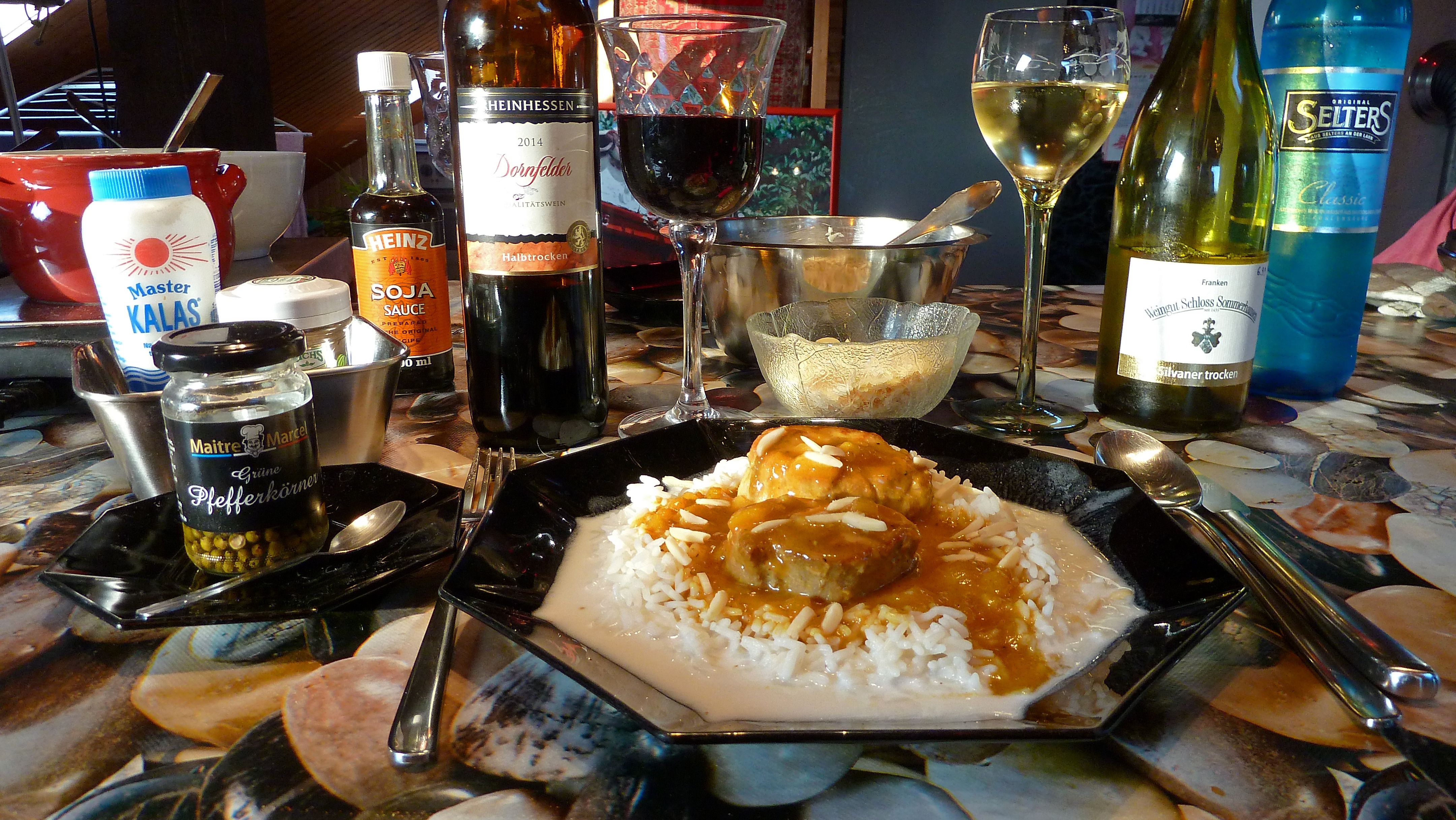
The biggest misconception about Indian food is that it is fiery and spicy, hence too dominant or unsuitable to pair with wines. The truth is more nuanced – while some dishes pack serious heat, many Indian preparations offer complex layers of flavor that work beautifully with the right wine selection.
Indian cuisine is a complex product of many cultures and regions, offering milder dishes that collaborate with wine, including tandoori and balti. Please don’t get too hung up on individual ingredients; instead, ask how hot it is overall. Those dishes incorporating cooling yoghurt, coconut, rice and various types of bread are also helpful. Let’s write off the searingly hot stuff straight away. Dishes with testosterone-appeal like Vindaloo numb the taste buds, so don’t waste money on wine with those. Lager (preferably Indian) or Lassi will serve you best if you like searing heat.
Vietnamese Cuisine: Fresh and Herbaceous
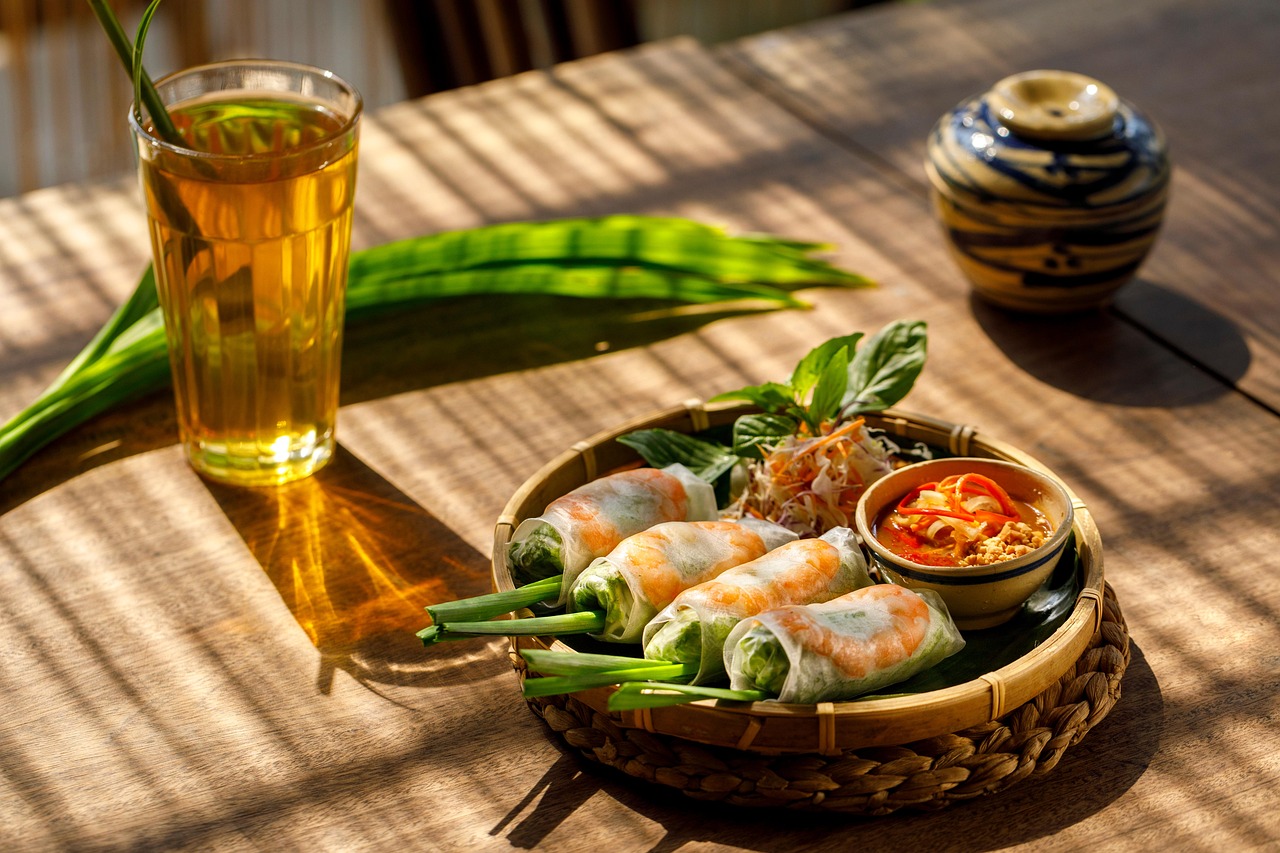
Vietnamese cuisine brings a fresh perspective to Asian flavors, emphasizing herbs, clean broths, and delicate balances. The river fish is marinated with turmeric, spring onion, heart onion, lemongrass, ginger, and basil then pan-fried. My suggestion is a young Riesling with a tiny amount of residual sugar from Alsace, France. This particular cuisine from Hanoi also has the pronounced flavor of fermented shrimp that requires a laser-focused acidity from Riesling grape wine to refresh the palate.
Bánh Xèo (Crispy Vietnamese Pancake) with Rosé or White Zinfandel – I would pair this with a Dry Rosé from Côte de Provence or an off-dry style White Zinfandel. The freshness and fruitiness from a dry rosé can cope with a crunchy crust, savory fillings and spiciness from herbs and chili. On the other hand, the off-dry white Zinfandel can round off the sweet and sour dipping sauce and reduce the heat from the chili.
Thai Cuisine: Complex Heat Management

Thai cuisine presents perhaps the greatest challenge for wine pairing because it combines all flavor elements – sweet, sour, salty, spicy, and umami – often within a single dish. The classic answer is an off-dry Riesling or Gewürztraminer. These aromatic whites often have a touch of residual sugar, which soothes the burn. Also, they’re usually low in alcohol and high in flavor – perfect for standing up to bold, spicy cuisines like Thai, Indian, or Sichuan dishes.
Another great option is Moscato d’Asti (lightly sparkling, sweet Moscato) for very spicy or curry dishes; its sweetness and low alcohol (often ~5-6%) are like a fire extinguisher for your palate, and the gentle bubbles help lift the intense flavors. The carbonation acts as a palate cleanser between bites, allowing you to fully appreciate each complex layer of flavor.
Rosé and Sparkling: Universal Crowd Pleasers
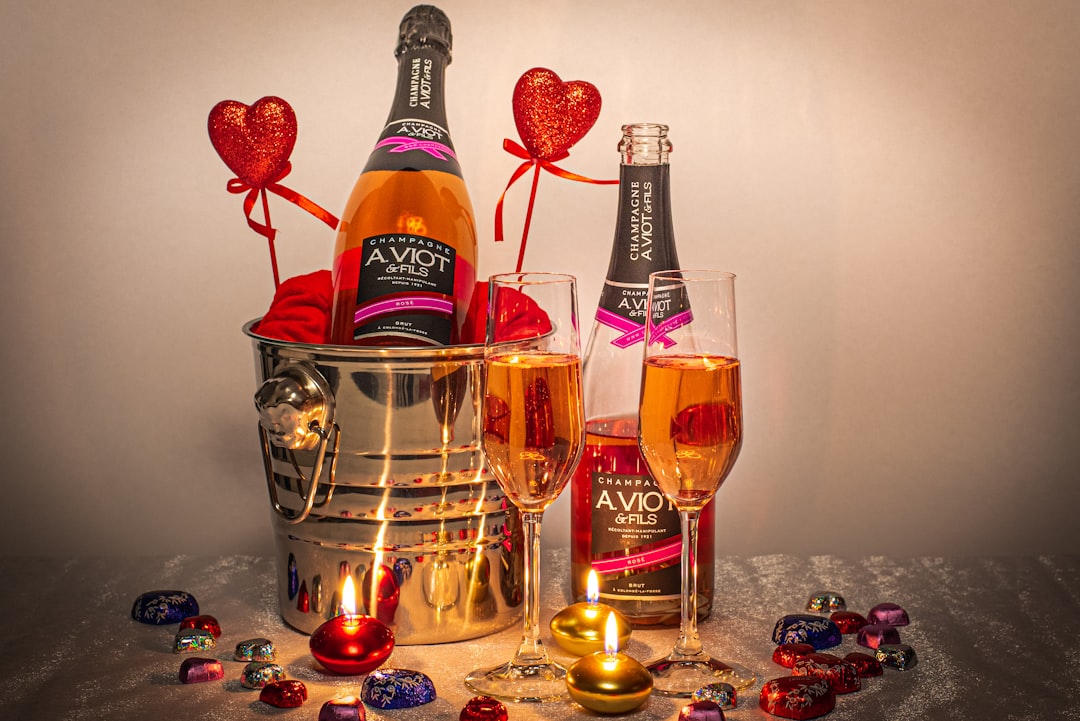
Don’t forget rosés – they’re just begging to be paired with strong, spicy Asian flavors. Great rosés are now being made in almost every major wine country. And, for what might well be the single best knockout pairing of all, try a rosé sparkling wine. The combination of bubbles and balanced acidity creates a magical reset button for your palate.
Italian rosés, often fruiter and more floral, are versatile wines. They pair particularly well with Mediterranean-style antipasti or seafood dishes, where their notes of berries and a hint of minerality play off the sweetness of the seafood. For any celebration, Italian sparkling wines like Prosecco bring an effervescence that can kick-start any meal. They’re excellent with appetizers or light desserts, such as fruit tarts, where their bubbles and brightness cleanse the palate.
Dessert Pairings: Sweet Endings
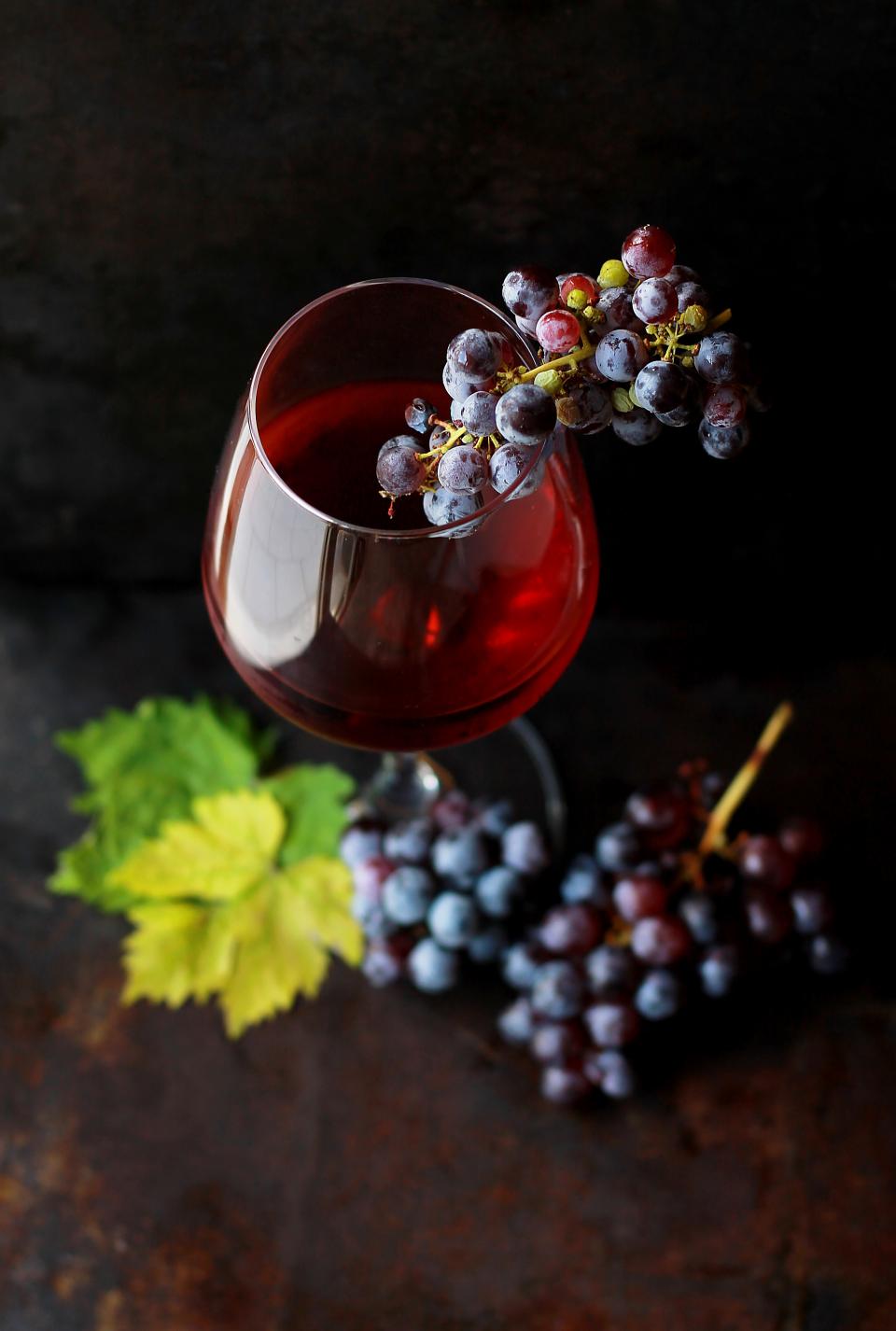
Pairing the right wine with desserts enhances flavors and enriches the dining experience. Specifically, when it comes to tiramisu, one of Italy’s most beloved desserts, finding the perfect wine completes the meal deliciously and harmoniously. Tiramisu, famous for its distinctive flavor, requires a wine that balances and enhances its rich and persistent flavors.
An ideal pairing for tiramisu is Moscato d’Asti, typical of Piedmont. This wine, made from Moscato Bianco grapes from Asti, Alessandria, and Cuneo, is sweet and slightly sparkling. Therefore, it is perfect to accompany the richness of tiramisu without overpowering its flavors. Sicily has a varied cuisine crowned by its pastries and sweets – a cannolo filled with sweet ricotta pairs well with a delightful, fortified sweet Marsala.
Modern Trends in Wine Pairing
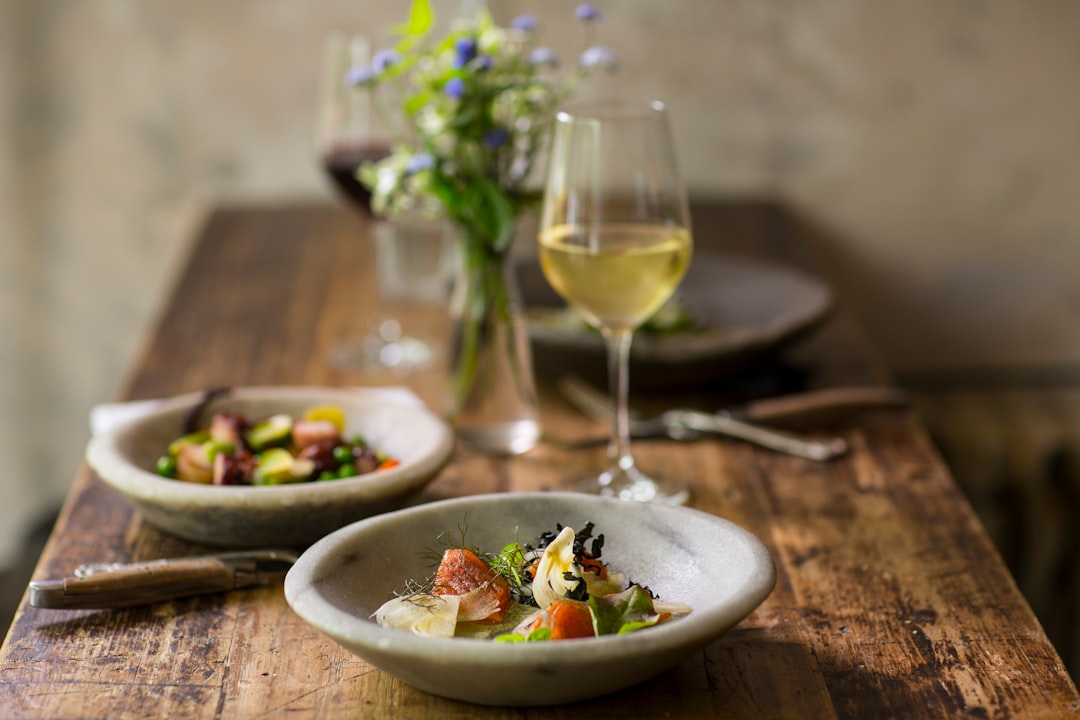
Food Pairing Experiences: As tasting menu culture evolves, more restaurants experiment with structured wine pairings at varied price points, broadening guest participation in wine exploration. This democratization of wine pairing has opened doors for home cooks to experiment with more adventurous combinations.
In recent years, sommeliers and food lovers have increasingly explored these pairings, discovering that the right wine can elevate Asian dishes to new heights of gastronomic excellence. Emerging wine regions, particularly from countries like New Zealand, Austria, and Oregon, often produce wines that pair beautifully with Asian flavors. Their focus on aromatics, acidity, and balance creates exciting opportunities for discovering new favorite combinations.
Despite a growing literature emphasising the value of food and wine pairings, this leisure activity continues to receive scant academic attention, including in emerging economies where still wine consumption is not an established phenomenon. A questionnaire administered online and targeted to wine and food consumers in various cities in Vietnam elicited 442 valid responses. An exploratory factor analysis revealed the importance of the ‘encompassing’, ‘engaging’, ‘intrinsically rewarding’, and ‘status-oriented’ dimensions.
Wine pairing isn’t just about following rules – it’s about understanding how flavors interact and having the confidence to trust your own palate. The key to successful pairing lies in understanding the fundamental characteristics of both the wine and the dish, then finding harmonious connections between them. Whether you’re enjoying delicate sushi, fiery curry, or umami-rich Chinese dishes, there’s always a perfect wine waiting to be discovered. What combination will you discover next?



